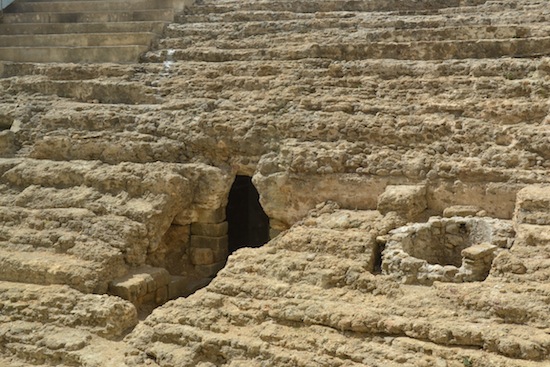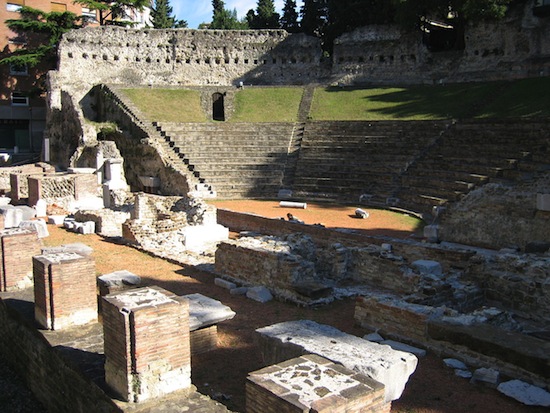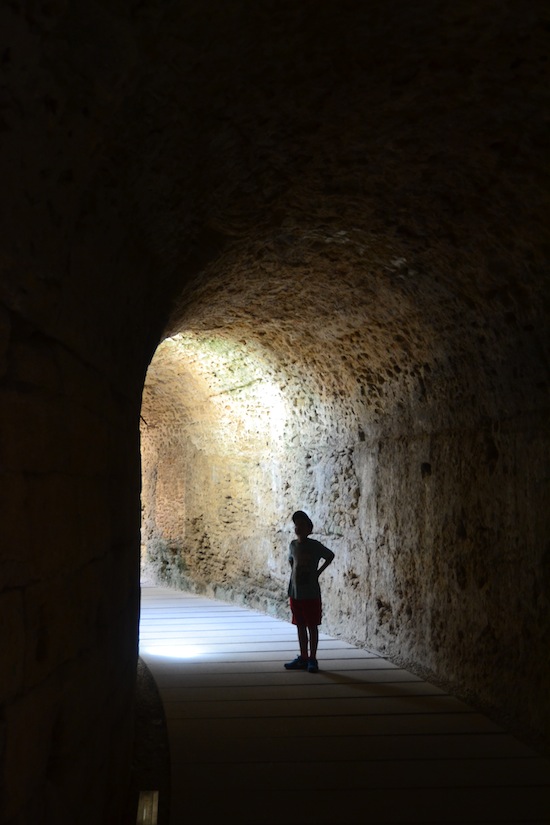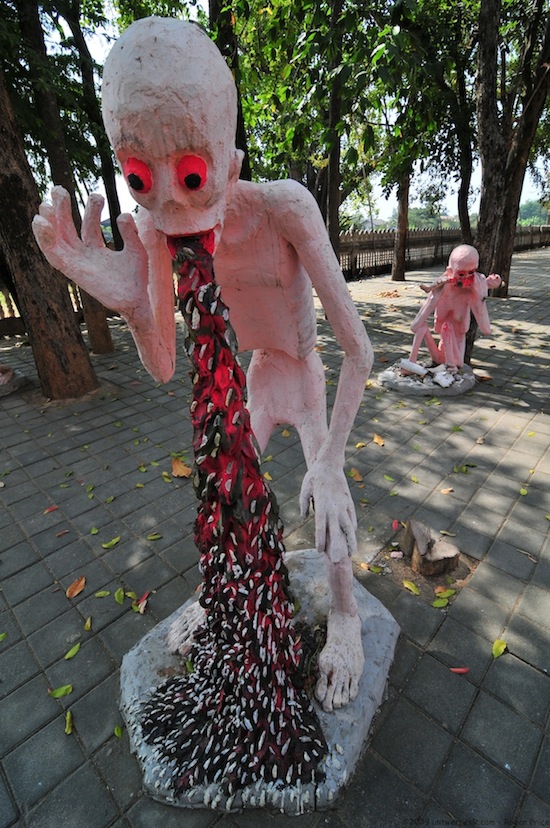The Ancient Roman Vomitorium: It Wasn’t What You’ve Been Told

The Roman theater at Cádiz sez: “Ugh, I’ve eaten too much dormouse. BLAARGH!”
I’ve often heard an odd rumor about the ancient Romans. Supposedly they had a special room in their villas and public houses called a vomitorium so that after binging on food and wine they could purge themselves and start stuffing their gullets again. You’ve probably heard that rumor too.
I’ve never believed that story, but while exploring the Roman remains at Cádiz, Spain, I discovered that the vomitorium actually did exist, it just wasn’t what we’ve been told.

The Roman theater at Trieste, with a well-preserved vomitorium
to the upper left. Photo courtesy Wikimedia Commons
“Vomitorium” (plural “vomitoria”) is actually a term for the entrance doors in theaters and amphitheaters from the internal lobbies onto the tiers of seats used by the spectators. The word comes from the idea that these doorways spewed forth the people.
Roman public buildings were cleverly designed. My copy of the Dictionary of Roman and Greek Antiquities by Anthony Rich (1893), says, “It is calculated that the Flavian amphitheatre was capable of containing more than 90,000 spectators, and was fitted with vomitories and staircases sufficient for the whole concourse to disperse in less than five minutes.”
That’s some impressive vomiting!

Wide interior hallways, like this one at the theater in Cádiz,
allowed the masses to get to the vomitoria and then to their seats
I’m not sure where the idea came from that vomitoria were for puking up a Roman feast, but I suppose it was a confusion over the name and the general idea that the Romans were a decadent people. Actually they were mostly a hardworking and intelligent people, and setting aside a room for binge-and-purge cycles of feasting, while appropriate for the figures that populate the books of Suetonius and Petronius, just wasn’t on the agenda of the average Roman citizen.
I’ve read a fair number of novels set in ancient Rome but have not come across any misuse of the vomitorium. That speaks well for the commitment to research by these authors. Famed classicist Mary Beard has a test for the accuracy of novels set in Rome called the “dormouse test.” Dormouse actually was a popular dish in some parts of the empire. The hair would be burnt off and the dormouse stuffed with a pork mince and cooked.
Beard points out that eating dormice is often the first weird thing about the Romans someone reading up on the subject will find, and superficial researchers will eagerly add it to their novels. Thus, the sooner a character eats a dormouse in a novel set in ancient Rome, the more inaccurate the novel will be. I suppose if there was a feast scene and a character went off to a special room called a vomitorium to puke, Dr. Beard would fail that book immediately!

You were probably expecting a puke shot for this article, so here it is. This
is some random sculpture from Thailand I found on Wikimedia Commons.
I think those are little people that demon is barfing out. Or maybe they’re
the 90,000 spectators from the Flavian amphitheater.
Photos copyright Sean McLachlan unless otherwise noted.
Sean McLachlan is the author of the historical fantasy novel A Fine Likeness, set in Civil War Missouri, and several other titles, including his post-apocalyptic series Toxic World that starts with the novel Radio Hope. His historical fantasy novella The Quintessence of Absence, was published by Black Gate. Find out more about him on his blog and Amazon author’s page.
*Professor* Beard would fail that book immediately!
You mean SNL lied to me?! Innocence lost. Still, better to know the truth. Thank you.
I can see the appeal of the dormouse. Not as dinner, but as a quirky detail. Now I’m wondering which of my secondary world cities would regard stuffed dormouse as a delicacy. (Once you’re stuffing a dormouse, why not embrace the absurdity and go full turducken? If you stuff a dormouse with pork and chicken, do you get a dorporken?)
There’s a scene in one of the Hunger Games novels in which the decadent citizens of the Capital assume our heroine from the starving provinces is familiar with their festive binge and purge practices. It may not be Roman, but in the dystopian world of those novels, it makes perfect sense.